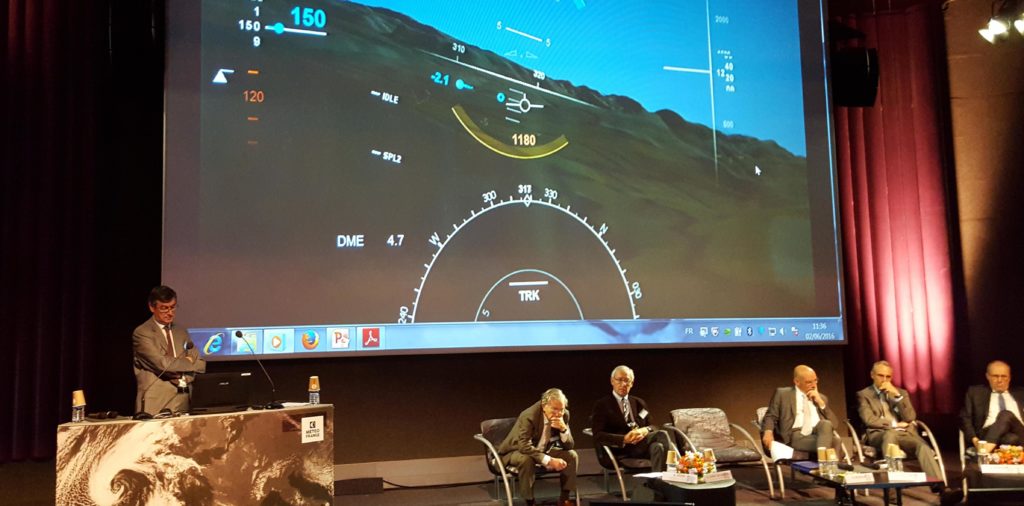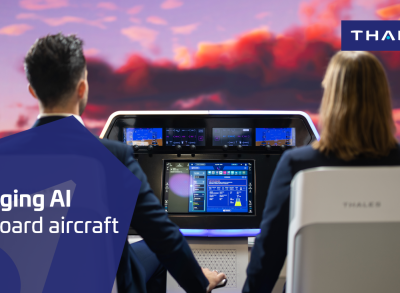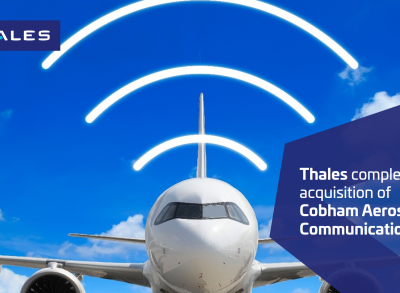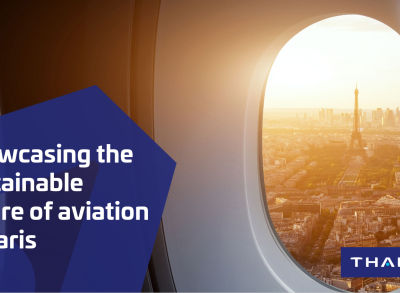How avionics could look in 2050
Will air transport be fully automated by 2050? That was the theme of the recent symposium organised by the French Air and Space Academy in Toulouse. Bruno Nouzille, VP Technical for Thales's avionics business, was there to share his vision of what lies ahead in the world of avionics.

Bruno Nouzille thinks the issue of fully automated air transport in fact entails two separate questions. The first is whether a fully automated aircraft will one day be able to perform a complete flight from take-off to landing. The answer is probably ‘yes’. The capabilities of the latest drones and automated onboard functions have unquestionably improved flight safety, but they have made avionics systems far more complex in the process. The result is that the flight crew is now much more focused on monitoring, managing and programming these systems and less focused on traditional roles.
The second question has more to do with the ability of system software to deal with all types of situations, given that a whole range of unexpected events may arise in the course of a flight. Future systems will need to think and make decisions like a human — and liability in the event of an accident would logically be transferred from the flight crew to the system designers. So while the trend towards more automation will continue, we are still going to need a pilot in the cockpit for the foreseeable future.
For Bruno Nouzille, the need for crews to live with ever more complex and automated systems and functions calls for a paradigm shift in human-system interaction. The crew will assume a mission management role, while systems will execute explicit actions in the pilot’s frame of reference rather than their own.
To meet this new challenge, Thales is developing two innovative concepts for the short, medium and long term.
The first is an integrated human-system interface (HSI) that will be human-centric and independent from the system architecture. This concept is well suited to the modern cockpit, as we have already seen with Avionics 2020, which transcends the world of windows, icons, menus and pointers (WIMP) to offer an intuitive, integrated experience on large-format interactive touchscreens, and with the TopMax eyes-out head-worn display offering an almost unlimited field of view.
The second concept is Fly by Trajectory, which puts the pilot at the centre of the decision-making process while easing the crew’s workload. The objective here is to enable pilots to manage the aircraft's future trajectory more directly and with better safeguards, keeping the autopilot permanently engaged but retaining the ability to take over manual control at any moment if necessary.
The bottom line is that Bruno Nouzille thinks there will be pilots in the cockpit for a long time to come. But with flight crews working with increasingly complex automated systems, there will need to be significant changes in how humans and systems interact. Avionics architectures will also need to evolve so that HSI management remains in the flight crew’s frame of reference and keeps crew members at the centre of the decision process throughout the mission. Integrated HSI concepts and Fly by Trajectory are just the beginning of a new chapter in the continuing story of air transport automation!
Find us on Twitter @thales_avionics, on our official Youtube channel Onboard TV and on LinkedIn Thales Aerospace.




